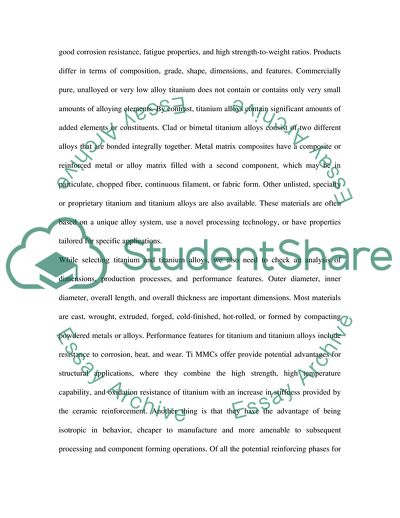Titanium Metal Matrix Composites Essay Example | Topics and Well Written Essays - 1500 words. https://studentshare.org/engineering-and-construction/1706253-fracture-and-fatigue-of-titanium-metal-matrix-composites
Titanium Metal Matrix Composites Essay Example | Topics and Well Written Essays - 1500 Words. https://studentshare.org/engineering-and-construction/1706253-fracture-and-fatigue-of-titanium-metal-matrix-composites.


